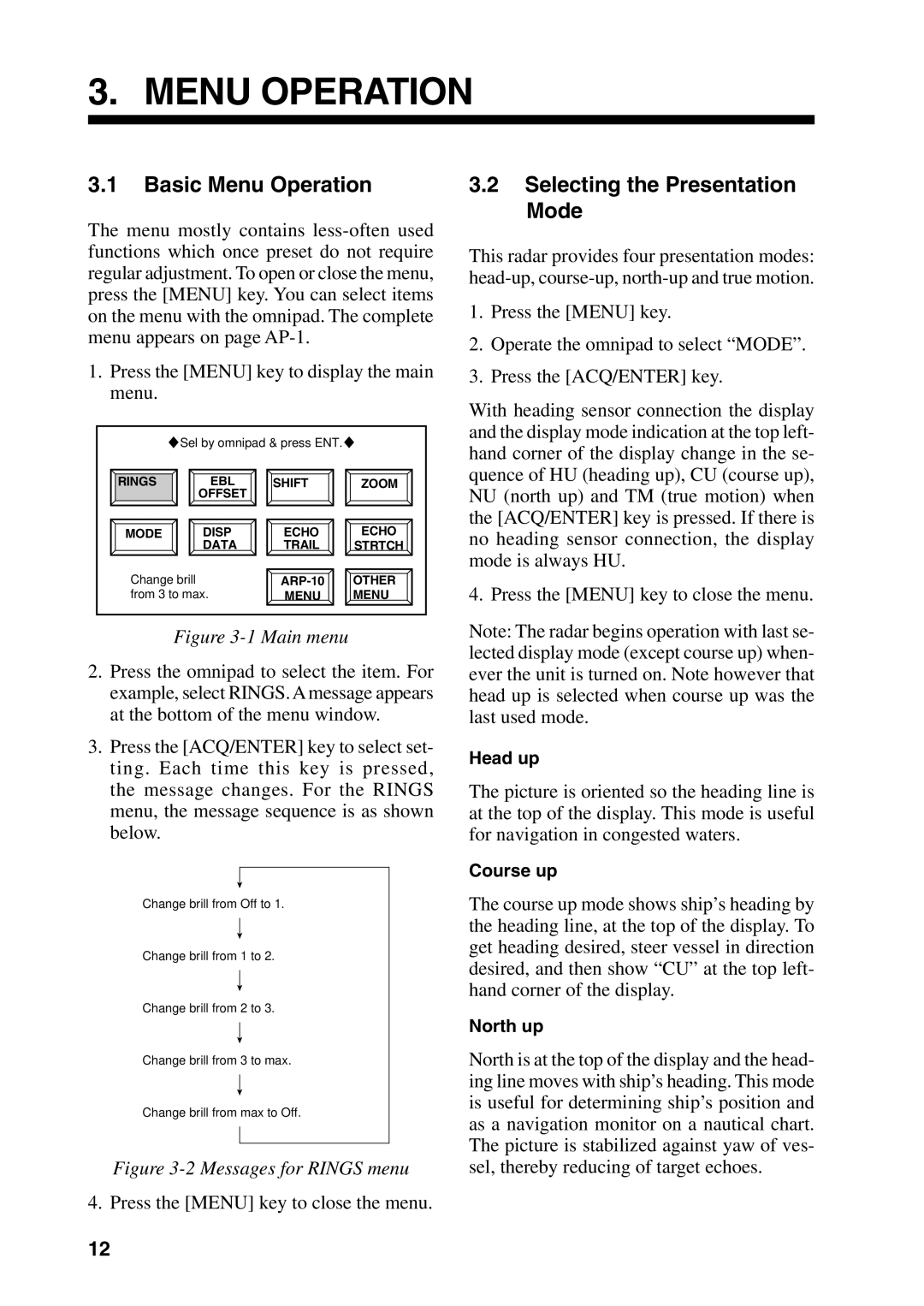
3. MENU OPERATION
3.1Basic Menu Operation
The menu mostly contains
1.Press the [MENU] key to display the main menu.
| SSel by omnipad & press ENT.S | ||
RINGS | EBL | SHIFT | ZOOM |
| OFFSET |
|
|
MODE | DISP | ECHO | ECHO |
| DATA | TRAIL | STRTCH |
Change brill | OTHER | ||
from 3 to max. | MENU | MENU | |
Figure 3-1 Main menu
2.Press the omnipad to select the item. For example, select RINGS. A message appears at the bottom of the menu window.
3.Press the [ACQ/ENTER] key to select set- ting. Each time this key is pressed, the message changes. For the RINGS menu, the message sequence is as shown below.
Change brill from Off to 1.
Change brill from 1 to 2.
Change brill from 2 to 3.
Change brill from 3 to max.
Change brill from max to Off.
Figure 3-2 Messages for RINGS menu
4. Press the [MENU] key to close the menu.
3.2Selecting the Presentation Mode
This radar provides four presentation modes:
1.Press the [MENU] key.
2.Operate the omnipad to select “MODE”.
3.Press the [ACQ/ENTER] key.
With heading sensor connection the display and the display mode indication at the top left- hand corner of the display change in the se- quence of HU (heading up), CU (course up), NU (north up) and TM (true motion) when the [ACQ/ENTER] key is pressed. If there is no heading sensor connection, the display mode is always HU.
4. Press the [MENU] key to close the menu.
Note: The radar begins operation with last se- lected display mode (except course up) when- ever the unit is turned on. Note however that head up is selected when course up was the last used mode.
Head up
The picture is oriented so the heading line is at the top of the display. This mode is useful for navigation in congested waters.
Course up
The course up mode shows ship’s heading by the heading line, at the top of the display. To get heading desired, steer vessel in direction desired, and then show “CU” at the top left- hand corner of the display.
North up
North is at the top of the display and the head- ing line moves with ship’s heading. This mode is useful for determining ship’s position and as a navigation monitor on a nautical chart. The picture is stabilized against yaw of ves- sel, thereby reducing of target echoes.
12
